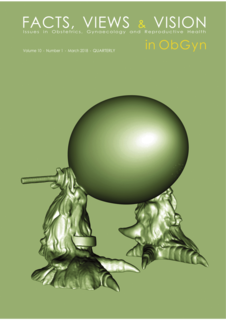Uterine exteriorization versus intraperitoneal repair: effect on intraoperative nausea and vomiting during repeat cesarean delivery – A randomized clinical trial
Exteriorization, uterine incision, uterine repair, cesarean delivery, nausea, vomiting
Published online: May 29 2019
Abstract
Objective: The current study aims to compare the rate of intraoperative nausea and vomiting after repeat cesarean delivery (CD) under two different approaches: by intraperitoneal incision repair or by uterus exteriorization for incision reapair.
Materials and methods: We conducted a single-blinded randomized clinical trial (NCT03009994) at a tertiary University Hospital between the 1st of September 2016 and the 31st of December 2017. The study included pregnant women at term of gestation (>37 weeks) scheduled for repeat CD under spinal anesthesia. Women were assigned to either uterine exteriorization for incision repair (Group I) or intraperitoneal incision repair (Group II). The primary assessed was the rate of nausea and vomiting during CD.
Results: The study included 1028 women in the final analysis. The rate of intraoperative nausea and vomiting was significantly lower in the intraperitoneal repair group compared to the exteriorization group (24% versus 38.7%, p= 0.001). Likewise, occurrence of uterine atony and the need for additional uterotonics were significantly lower in the intraperitoneal repair group (p= 0.001 and 0.02 respectively). Postoperatively, the rate of nausea and vomiting (12.6 % versus 21 %; P=0.001), and the time to the first recognized bowel movement (12.3 hours versus 14.1 hours; P=0.003) were significantly lower in the intraperitoneal repair group compared to the exteriorization group.
Conclusions: Intraperitoneal repair of the uterine incision during repeat CD is beneficial compared to exteriorization. Improvements in the rate of intra- and postoperative nausea, vomiting, uterine atony and time to the first recognized bowel movement were observed in patients operated with this technique.



